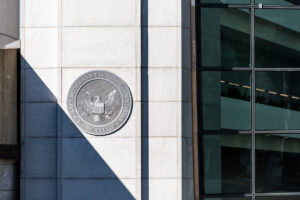ESG in action: 2 hands-on examples for your organization
ESG is an all-hands endeavor, and should become part of the day-to-day fabric of the enterprise, with everyone involved and everyone buying in.

ESG—Environmental, Social and Governance—encompasses the concept of building sustainability into your organization as a core tenet. It’s gained urgency in recent years, and now it’s frequently required by boards of directors and investors—and seen as essential in mitigating risk.
So what does ESG look like in action? The common thread in ESG initiatives is usually risk mitigation and reputation management. For example, one priority at Entergy, the New Orleans-based electrical power company, is to substantially reduce its carbon footprint, ultimately achieving net zero emissions by 2050.
“This is an “all hands” undertaking that will require input and collaboration among nearly every one of Entergy’s business functions,” says John Weiss, vice president of sustainability and environmental policy. “It’s rethinking how we provide our customers with energy that remains reliable and affordable, while also meeting the challenge of eliminating most of our greenhouse gas emissions.” Naturally, eliminating greenhouse gases gets the attention, Weiss says, but there are numerous other instances of how Entergy looks for opportunities to accelerate progress toward that net zero goal.
One initiative involves the company’s supply-chain organization, which procures everything from office supplies to large-scale equipment and services for operating power-generation facilities. That unit is committed to managing risk in part by securing effective partnerships. In 2019, for example, Entergy formed a partnership with Xerox to launch the Entergy PrintSmart program, which supports global re-forestation. “Through this program Entergy has planted 20,000 trees, offsetting the equivalent of printing more than 160 million sheets of paper since the partnership’s launch,” Weiss says.
[FREE REPORT: Strengthen your knowledge and skill around ESG communications]
At Waterbury, Connecticut-based Webster Bank, meanwhile, EVP, General Counsel and Corporate Secretary Harriet Munrett Wolfe says ESG is integrated into the everyday workflow. She points to DE&I efforts, and lending for renewable and clean-energy projects. In addition, there is philanthropic support for a wide variety of nonprofit agencies focused on basic needs such as food and shelter, financial literacy, and health and human services.
The bank, Wolfe says, remains committed to its Community Reinvestment Act activities, and notes that it earned the highest-rating possible from the U.S. Office of the Comptroller of the Currency. This recognizes efforts to ensure fair and responsible banking, promote community development, and provide resources to communities that need them most.
Specific initiatives aside, there’s a more fundamental question—why do these things at all? Is there ROI? Stakeholder goodwill? Increased sales? Other objectives? All of the above? “Webster is a values-driven bank,” Wolfe says. “We believe in doing the right thing, even when no one is watching.”
These are just some of the insights in our exclusive ESG report for members of Ragan’s Communications Council. Get started now by downloading our free ESG communications executive summary.
Among other things, you’ll learn:
- The powerful impact ESG has had on the C-suite, on boards of directors, and on investors.
- The initial impetus for ESG in the first decade of this century.
- How ESG works in action from specific examples.
- Where ESG fits in the enterprise.
- The role of ESG-related communications in reputation management.
- Communications strategies built specifically for ESG.
- How to measure ESG communications efforts.
- Where ESG should reside among the array of other communications priorities.






